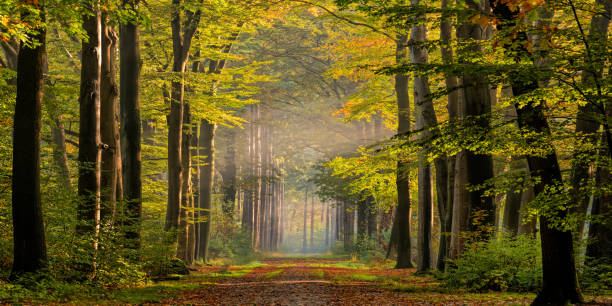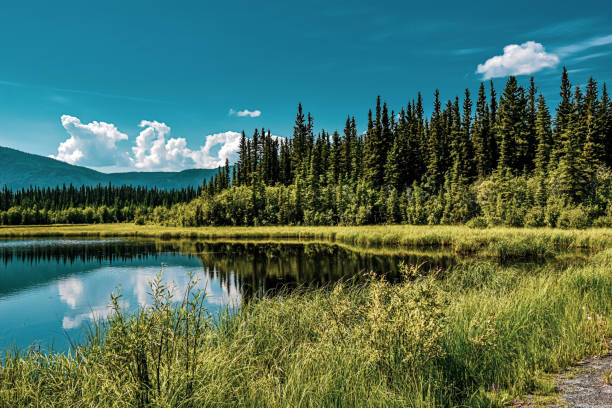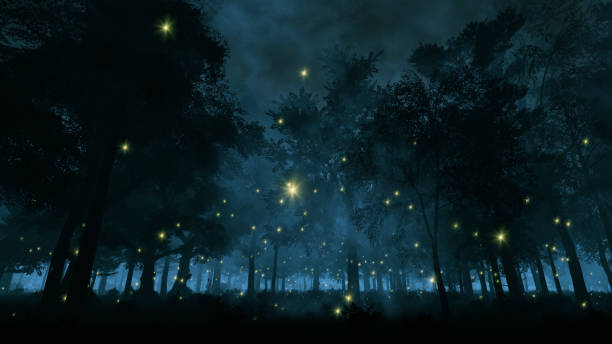How To Describe A Forest In A Story (For Beginners In 2024)
How To Describe A Forest In A Story
How To Describe A Forest In A Story: In the heart of storytelling, the art of describing a forest transcends mere words; it is a symphony of sensory engagement that beckons readers into a realm of enchantment.
A forest, with its ancient tapestry of towering trees, hidden clearings, and elusive wildlife, holds the potential to be more than just a setting—it can be a character, a catalyst, and a living, breathing entity within the narrative.
Mastering the craft of forest description requires an alchemical blend of vivid imagery, tactile sensations, and the delicate balance of emotions.
Join me on a journey through the literary underbrush as we unravel the secrets of how to paint a forest with words, creating an immersive experience that transports readers into the very heart of nature’s embrace.
How To Describe A Forest In A Story
Sure, here’s a step-by-step guide on How To Describe A Forest In A Story:
Observation
Begin by observing the forest closely. Take note of its overall appearance, including the types of trees, the density of vegetation, and the presence of any undergrowth.
Sensory Details
Engage the reader’s senses by describing the sights, sounds, smells, and textures of the forest. Use vivid language to create a sensory experience for the reader.
Visual Description
Start with the visual elements of the forest. Describe the towering trees, the dappling sunlight filtering through the canopy, and the play of shadows on the forest floor.
Soundscape
Describe the sounds of the forest, such as the rustling of leaves, the chirping of birds, the buzzing of insects, and the occasional creaking of branches in the wind.
Aromas
Explore the scents of the forest, including the earthy smell of damp soil, the fragrance of pine needles, the sweetness of wildflowers, and the musky odor of decaying vegetation.
Texture and Touch
Capture the tactile sensations of the forest, such as the rough bark of trees, the softness of moss-covered rocks, and the coolness of shaded pathways.
Emotional Response
Convey the emotional impact of the forest on the characters or narrator. Describe feelings of awe, tranquility, solitude, or unease inspired by the forest environment.
Symbolism and Metaphor
Use the forest as a symbol or metaphor to enhance the thematic depth of your story. Explore concepts like growth, renewal, mystery, or the cycle of life and death.
Character Interaction
Show how characters interact with the forest environment. Describe their movements through the trees, their reactions to its beauty or dangers, and the way they connect with nature.
Overall Atmosphere
Finally, convey the overall atmosphere of the forest. Is it a place of sanctuary and refuge, or does it harbor hidden dangers and mysteries? Use descriptive language to evoke the mood and tone of the forest setting.
By following these steps, you can effectively describe a forest in your story and immerse your readers in its rich and vibrant world.

Setting the Scene
In the enchanting realm of narrative, where words dance like fireflies in the dusk, setting the scene becomes an artistry of captivating strokes and vivid hues.
Imagine a canvas unfurling before your mind’s eye, a tapestry woven with the essence of anticipation and wonder.
As the curtain of imagination rises, the stage is meticulously crafted – a symphony of rustling leaves, a ballet of dappled sunlight filtering through the ancient canopy, and the whispered secrets of the wind weaving through towering trees. Here, time is but a transient spectator, enraptured by the choreography of nature’s opulence.
In this orchestration of sensory delights, the scene is not merely set; it is an invitation to wander, explore, and lose oneself in the immersive tapestry of a world waiting to be discovered.
Establishing the forest as a central element in the story
In the heart of my narrative, the forest emerges as more than just a backdrop; it is a living, breathing character, pulsating with its own heartbeat and secrets.
Its towering trees, ancient sentinels cloaked in emerald hues, whisper tales of forgotten epochs, and its sprawling underbrush teems with the untold stories of flora and fauna.
This sylvan sanctuary serves as the silent witness to the protagonist’s journey, offering solace, challenges, and the veiled wisdom of the wild.
The forest becomes a protagonist in its own right, shaping the narrative with its enigmatic allure and influencing the characters’ destinies.
It is not merely a setting but a realm where the very essence of the story unfolds, a realm where the characters are tested, transformed, and ultimately find a profound connection with the untamed spirit of nature. In this tale, the forest is not just a picturesque backdrop—it is the beating heart that propels the story forward with its mysterious rhythm.
Sensory Imagery
Embarking on the journey of sensory imagery is akin to unlocking a treasure trove of sensations that lie dormant within the pages of a story.
As words weave a tapestry of perception, the reader is not merely an observer but a participant in a symphony of senses. Picture the fragrance of nostalgia wafting through the narrative, the taste of bittersweet memories lingering on the tongue of imagination, and the visual kaleidoscope painted with the vivid brushstrokes of descriptive prowess.
With each sentence, the reader is invited to feel the soft caress of a gentle breeze, hear the melodic rustle of autumn leaves, and taste the intoxicating aroma of a moonlit forest.
Sensory imagery is not just a tool; it is an alchemy that transmutes the ordinary into the extraordinary, rendering the reader not just an audience but a willing captive of an immersive experience where every sensation is a note in the grand symphony of storytelling.
Tactile Experiences
In the palpable tapestry of storytelling, tactile experiences emerge as the loom upon which emotions are intricately woven.
The words become the weaver’s shuttle, threading through the fabric of imagination, leaving behind a tactile trail of sensations that dance upon the reader’s fingertips.
Texture, warmth, and the subtle shiver of anticipation become the protagonist, inviting readers to run their literary fingers across the coarse bark of an ancient tree, feel the silkiness of moonlit dew on a protagonist’s skin, or trace the edges of a weathered journal, worn by time.
Tactile experiences in a narrative are not mere descriptions; they are portals into a realm where readers don’t just see or hear, but they touch, and in that touch, they forge an intimate connection with the very essence of the story, where every sensation is a chapter waiting to be explored.

Emotional Impact
In the alchemy of storytelling, the emotional impact is the elixir that turns words into an unforgettable experience.
It’s the silent conductor orchestrating a symphony of heartbeats, seamlessly weaving the ethereal thread of empathy between the narrative and the reader. Each sentence becomes a resonating chord, vibrating with the raw intensity of joy, sorrow, and everything in between.
It’s the cathartic release that leaves a lingering echo, an indelible mark on the soul. Imagine words as keys unlocking the floodgates of sentiment, inviting readers to navigate the labyrinth of emotions with characters as guides.
The emotional impact is not just a byproduct; it’s the heartbeat of the story, a pulsating force that transcends the written word, creating a visceral connection where stories cease to be just tales and become transformative experiences etched into the very fabric of the reader’s heart.
Time and Season
In the grand tapestry of storytelling, time and season emerge as celestial weavers, gracefully threading the narrative with the hues of temporal magic.
Each moment is a fleeting symphony, a dance between the pendulum of past and future, painting the story with the brushstrokes of chronicles.
Seasons, like chapters, unfold in a kaleidoscopic display – the vibrant exuberance of spring, the sultry embrace of summer, the melancholic hues of autumn, and the hushed whispers of winter’s tale.
Time becomes a silent architect, constructing the very architecture of the plot, leaving readers to traverse its corridors and alcoves. It’s not just a backdrop; it’s the relentless heartbeat, a metronome guiding the rhythm of the narrative.
Together, time and season are the alchemists, transforming stories into timeless odysseys where the ticking clock and changing seasons are not just witnesses but active participants in the symphony of existence.
Symbolism and Metaphor
In the vast expanse of literary creation, symbolism and metaphor emerge as the elusive artisans, casting spells that transcend the mundane and elevate prose to the realm of enchantment.
Words become vessels, carrying hidden meanings like treasures in a mystic labyrinth. Symbols are the cryptic whispers, speaking in the silent language of archetypes, while metaphors are the alchemists, transmuting the ordinary into the extraordinary.
Each carefully chosen image is a puzzle piece, inviting readers to decode the layers of meaning woven into the narrative tapestry.
It’s a dance of ideas, where a rose isn’t just a flower, but a harbinger of passion, and a storm becomes a metaphorical tempest echoing the turmoil within.
Symbolism and metaphor are the keys to unlocking the door to a world where every word is a riddle, inviting readers to embark on a journey of intellectual unraveling, where the story isn’t just read but deciphered in a dance of linguistic sorcery.
Frequently Asked Questions (FAQ) about How to Describe a Forest in a Story
How can I make my forest description stand out in a story?
To make your forest description memorable, engage multiple senses. Describe not just the visual aspects but also the sounds, scents, and textures. Create a vivid tapestry that allows readers to feel the heartbeat of the forest.
What role does personification play in describing a forest?
Personification breathes life into the forest, transforming it from a mere backdrop to a dynamic character. Attribute human-like qualities to elements like trees or the wind to add depth and resonance to your description.
How do I balance detail without overwhelming the reader in a forest description?
Choose key details that contribute to the mood and atmosphere. Focus on significant elements that evoke emotions or propel the narrative forward, allowing readers to fill in the gaps with their imagination.
Can metaphors and symbolism enhance a forest description?
Absolutely! Metaphors and symbolism add layers of meaning, turning the forest into a metaphorical landscape that reflects the themes and emotions of your story. Use them thoughtfully to enrich your description.
Should I consider the time of day and seasons when describing a forest?
Yes, the time of day and seasons greatly impact the forest’s ambiance. Describing the interplay of sunlight through leaves or the crunch of autumn leaves underfoot adds richness and authenticity to your portrayal.
How can I evoke a sense of mystery and intrigue in my forest description?
Utilize the unknown to create intrigue. Mention hidden paths, ancient ruins, or unusual flora and fauna. Embrace the mysterious elements to captivate readers’ curiosity and invite them to explore your forest’s secrets.
Is it important to connect the forest description with the overall theme of the story?
Absolutely. Ensure that your forest description aligns with the themes and emotions of your narrative. The forest should not exist in isolation but contribute meaningfully to the overall story arc.
How do I avoid clichés when describing a forest?
Challenge yourself to find unique perspectives and details. Move beyond typical descriptions and explore lesser-known aspects of a forest. Injecting your personal observations and experiences will make your portrayal more authentic and fresh.
Conclusion
In the realm of storytelling, the art of describing a forest serves as a gateway to an enchanting world where words become the brushstrokes painting the canvas of imagination.
As we conclude our journey through the foliage of literary description, remember that a forest is not merely a backdrop but a living, breathing entity that can shape the very essence of your narrative.
Balancing sensory engagement, weaving in metaphors and symbolism, and embracing the mystical allure of the unknown, you transform the forest into a dynamic character within your story.
So, as you embark on the exploration of your narrative woodland, let your words sway like branches in the wind and your descriptions bloom like the vibrant flora under the forest canopy, creating an immersive experience that lingers in the hearts of your readers long after they’ve ventured beyond the last page.
The art of describing a forest is an ever-evolving dance between the tangible and the ethereal, inviting storytellers to embrace the magic hidden within the leaves and shadows, leaving an indelible mark on the literary landscape.






